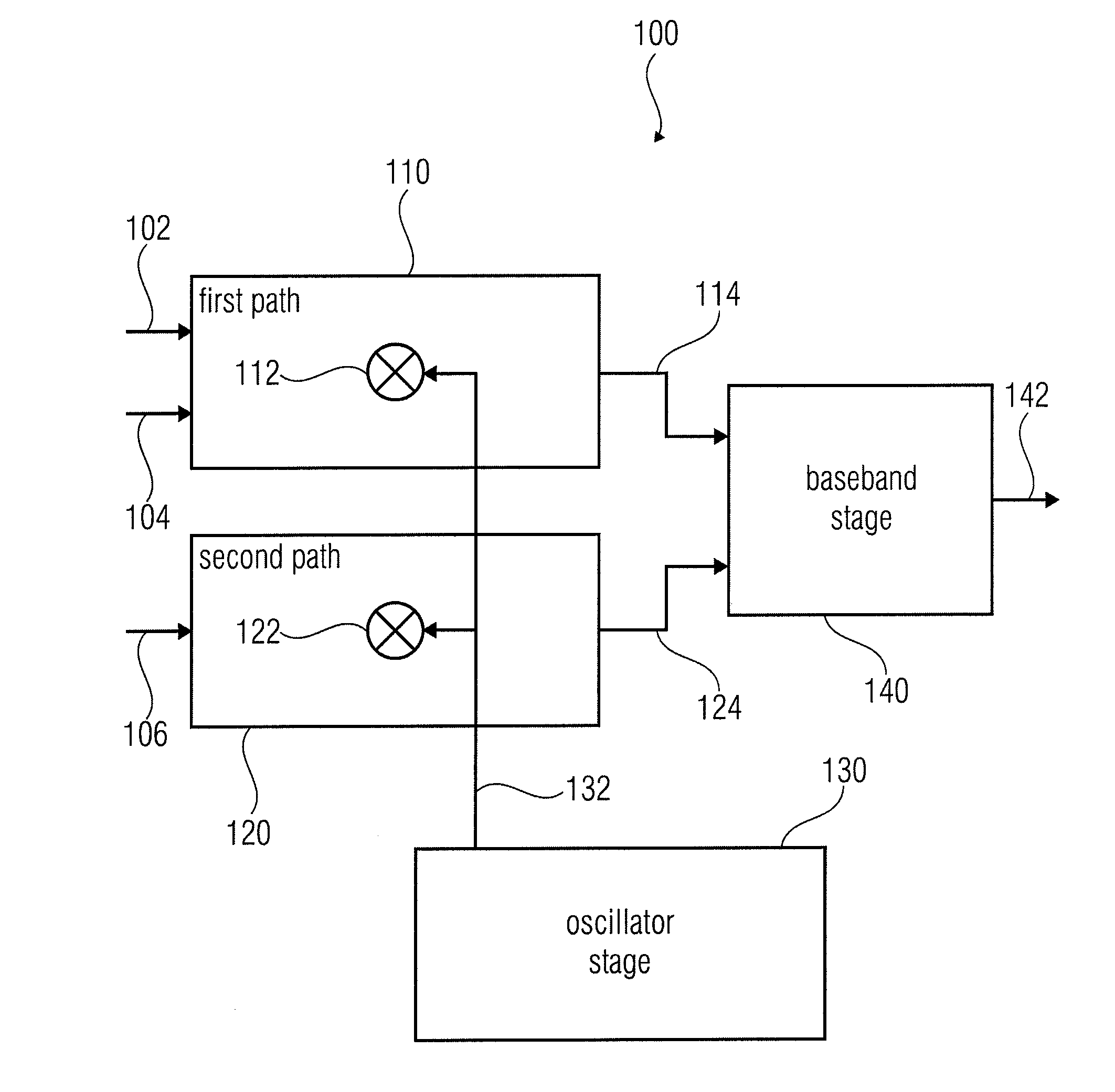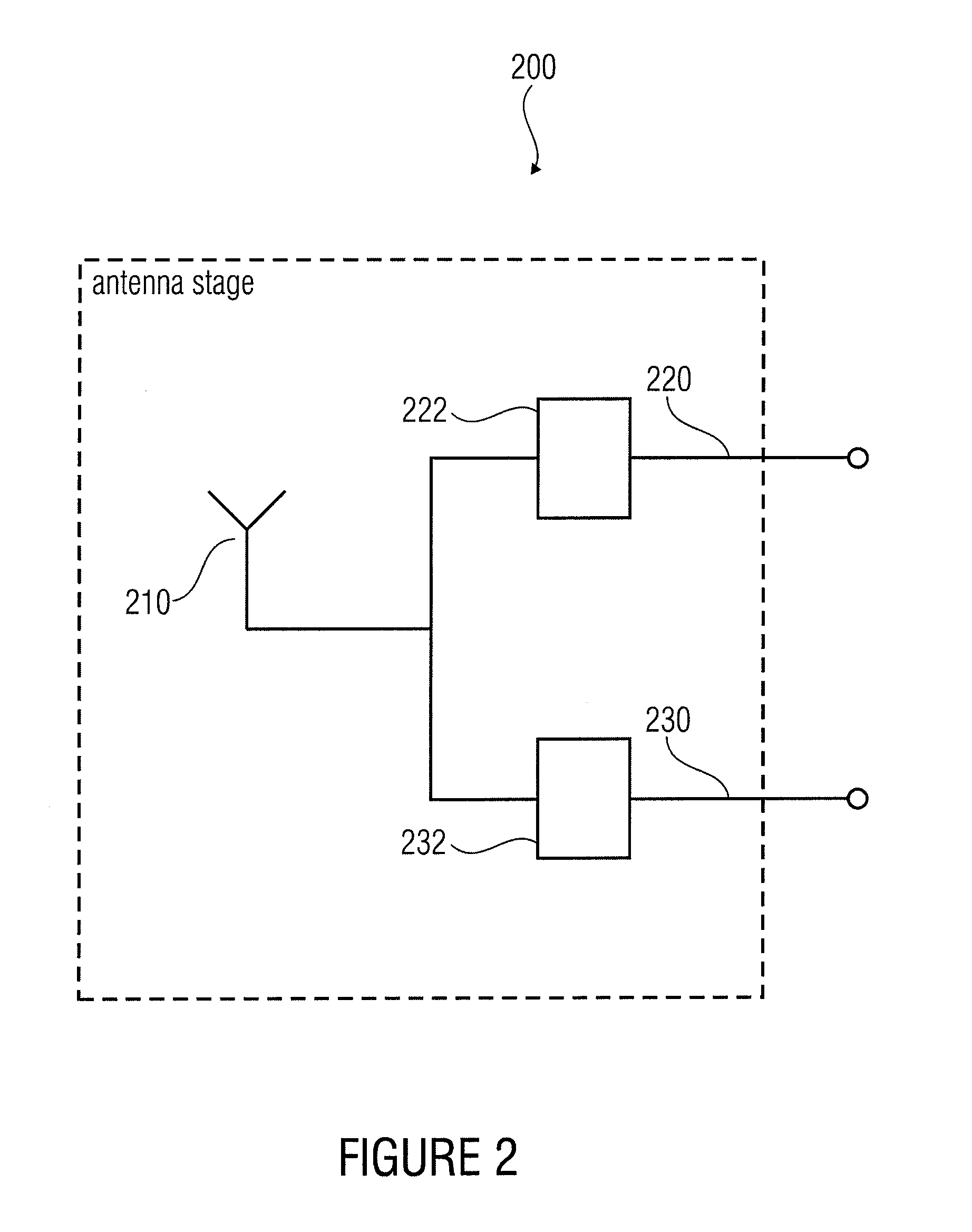Multi-Frequency Band Receiver
a receiver and multi-frequency band technology, applied in the direction of direction finders, modulated carrier systems, transmission, etc., can solve the problems of large space occupation, high cost, and insufficient broadband for several frequency bands of single input stages, so as to reduce the number of oscillators, reduce current consumption, and reduce the effect of cos
- Summary
- Abstract
- Description
- Claims
- Application Information
AI Technical Summary
Benefits of technology
Problems solved by technology
Method used
Image
Examples
Embodiment Construction
[0044]FIG. 1 shows a block diagram of a multi-frequency band receiver 100 in accordance with an embodiment of the invention. The receiver 100 comprises a first path 110 for processing a first frequency band 102 and a second frequency band 104, and a second path 120 for processing a third frequency band 106. The first frequency band 102 and the second frequency band 104 have a smaller distance than the first frequency band 102 and the third frequency band 106, and a smaller distance than the second frequency band 104 and the third frequency band 106. In addition, the receiver comprises an oscillator stage 130 for providing a local oscillator signal 132. The frequency of the local oscillator signal 132 is between the center frequency of the first frequency band 102 and the center frequency of the second frequency band 104. In addition, the first path 110 and the second path 120 each have one mixer 112, 122, it being possible for both mixers 112, 122 to be supplied with the same local ...
PUM
 Login to View More
Login to View More Abstract
Description
Claims
Application Information
 Login to View More
Login to View More - R&D
- Intellectual Property
- Life Sciences
- Materials
- Tech Scout
- Unparalleled Data Quality
- Higher Quality Content
- 60% Fewer Hallucinations
Browse by: Latest US Patents, China's latest patents, Technical Efficacy Thesaurus, Application Domain, Technology Topic, Popular Technical Reports.
© 2025 PatSnap. All rights reserved.Legal|Privacy policy|Modern Slavery Act Transparency Statement|Sitemap|About US| Contact US: help@patsnap.com



